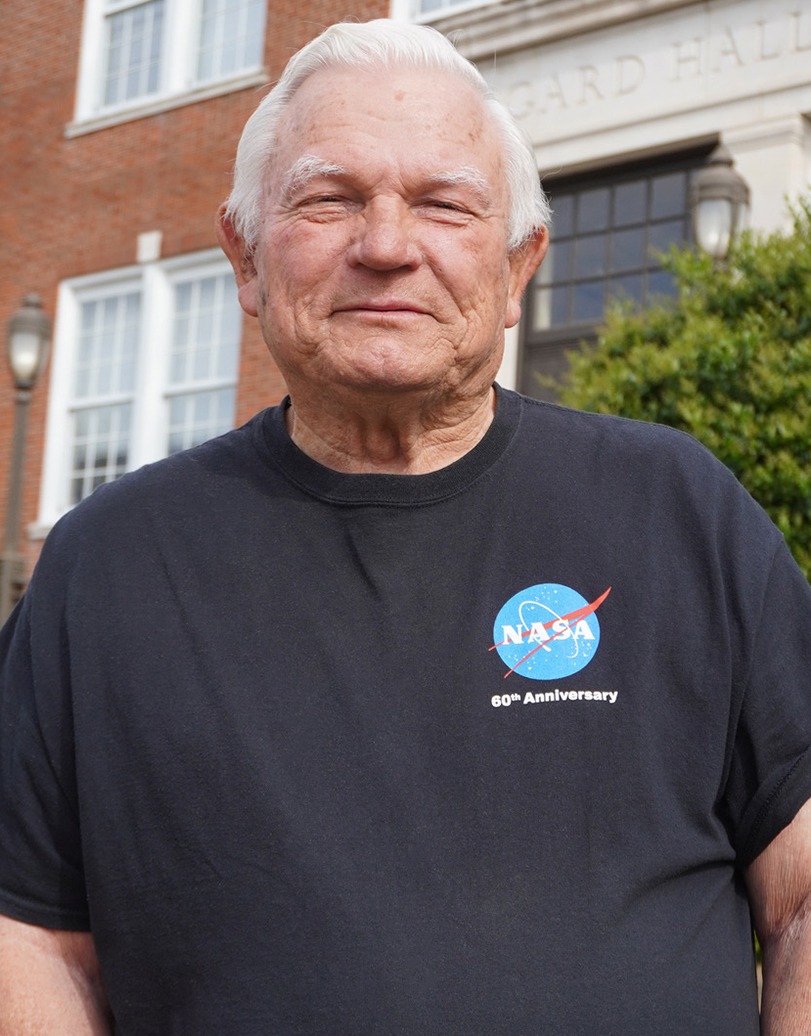COLLEGE OF ENGINEERING & SCIENCE
Alumni Spotlight: Ragan Edmiston
From Ruston to the moon: Electrical Engineering alum puts cameras in space

Ragan Edmiston was a bright-eyed young electrical engineer one-quarter from graduation when NASA sent a headhunter to campus to recruit him. In less than a year, he was at Houston’s Manned Spacecraft Center and on his way to becoming “NASA’s TV man.”
Throughout his 37-year career with the US space agency, Edmiston worked on the Apollo missions and the later space shuttle program, coordinating between industry and government partners to develop an array of gear.
Working alongside a team of industry and government experts, Edmiston helped design the backbone of space communication: a radio system enabling astronauts to stay connected with ground control. This project was a crucial lifeline for the Apollo missions and beyond, ensuring that the astronauts were never truly alone when they embarked on humanity’s boldest journey. As NASA’s TV man, Edmiston was also directly responsible for the Apollo 11 video transmission that traveled 238,900 miles from the lunar surface to millions of television sets around the globe.
His number one task was to meet the low-weight requirements demanded by the system’s constraints, and his number two task was to do it within budget. All he had to do was redesign the – at the time – large, clunky cameras into something the size of a breadbox that could function in the extremes of space, wirelessly send video millions of miles, and function pretty independently so the astronauts could just set it on a tripod and go about their business of collecting lunar rocks. According to Edmiston, all it took to meet these challenges was a can-do attitude, a Louisiana Tech electrical engineer’s mind, and enough youth not to know what they were doing was impossible.
As NASA’s TV man, Edmiston’s efforts were pivotal in bringing the cosmos to our living rooms, but the ripple effect of his work transcended beyond these monumental broadcasts. The technologies he helped develop for the Apollo missions — compact cameras, communication systems, and other electronic marvels — didn’t vanish into the annals of history. Instead, they spread far and wide, finding new homes in the commercial and medical fields. Today, as we swipe through photos on our phones or video chat with people across the world, we’re touching a piece of that legacy.
So, how did he wind up at NASA?
Edmiston’s path to NASA began at Louisiana Tech in the early 1960s, a choice inspired by a challenge from his high school basketball coach, who suggested that he earn a degree from the University. A streak of tenaciousness led him to the Electrical Engineering program, one he felt would challenge him – and it did. Of all the challenges Edmiston has faced, completing his degree is the one he remembers as the most important and challenging.
Getting my degree was one of the hardest things I’ve done. The coursework was strenuous, and I had to work hard to complete it. But that prepared me for the challenges that NASA faced. I learned to love learning. That was an essential skill in my position at NASA. The agency had just developed a new field: aerospace engineering. None of us had that. We all had to learn on the job. I succeeded at that partially because of my Louisiana Tech education.
Reflecting on his career, Edmiston credits Louisiana Tech for setting him on this unprecedented path. “I have no doubt that without Louisiana Tech, my life would have turned out very differently,” he muses, highlighting the profound impact of education on personal destiny. From his early days as a student to becoming “NASA’s TV man,” his journey is a testament to the power of seizing opportunities and the foundational role of institutions like Louisiana Tech in preparing graduates to do the impossible.